Brian Fauteux
A performance scene is a critical component of the music biopic, establishing links between the past and present, and between viewers and their memories of a particular band or (more often than not deceased) artist. Performances-whether revered or criticized-highlight memorable moments of a musical career and can motivate and structure the narrative of a music biopic. Gary R. Edgerton cites television as an especially influential medium for delivering music performances to viewers, arguing that it has “transformed the way tens of millions of viewers think about historical figures and events” through numerous nonfictional and fictional portrayals (1). This essay considers the televised performance of “Transmission” by Joy Division in Anton Corbijn’s Control (2007) to highlight the ways in which the performance scene, as a signature event in the band’s popular memory, bridges the past and present by integrating aspects of the original televised performances into contemporary popular culture. Moreover, the performance of “Transmission” marks a critical point in Joy Division’s career. The band generates attention and popularity through the exposure granted by the power of television-an increasingly prominent medium in the promotion of popular music at the time of the original performances. Corbijn’s representation of the “Transmission” performance advances both the represented and popular historic narrative of the band, illustrating the significant contribution of both television and film to the collective and popular history and memory of Joy Division.
Control recalls the life of the late Ian Curtis (Sam Riley), from his time as a young David Bowie fan and student in Macclesfield, England, to his years as the lead singer of Joy Division. The film ends with Curtis’s suicide on May 18, 1980, succeeding emotional hardships stemming from his difficulties in balancing his marriage to Deborah Woodruff (Samantha Morton), and time spent on the road with his band and girlfriend, Annik Honoré (Alexandra Maria Lara). Control is Corbijn’s first feature film, following a directorial career that includes many music videos, such as Nirvana’s “Heart-Shaped Box” (1993), multiple videos for Depeche Mode (e.g. “Personal Jesus” in 1989 and “In Your Room” in 1994), and the video for Joy Division’s “Atmosphere” (1988 reissue). Corbijn’s relationship to Joy Division precedes his direction of “Atmosphere,” as he photographed the band in the late 1970s. As Corbijn notes in a recent interview, “I had moved to England to be close to that music at the time, and I was very into Joy Division. I worked with them, took pictures of them that became synonymous with their music, and I was forever linked” (Tewksbury). The framing, composition and aesthetics of the places and spaces seen and heard in Control are often reflective of Corbijn’s iconic black-and-white images from that time.
Corbijn’s transition from photographing Joy Division to directing a feature film about the band is important to consider within the context of the music biopic. Certainly, Corbijn’s extensive role as a shaper of Joy Division’s mediated image factors into the way in which Control‘s aesthetics and narrative are represented. The high-contrast black and white scenes in Control recall this relationship between Corbijn and Joy Division-that of the mediator and the mediated-emphasizing the camera’s place in representing, re-imagining, and transmitting music history. It seems fitting then, that Corbijn should choose to amalgamate two memorable live televised performances into his “Transmission” scene: the September 1978 performance of “Shadowplay” on Tony Wilson’s Granada Reports, and the September 1979 performance of “Transmission,” Unknown Pleasure‘s non-album single, on BBC2’s Something Else. “Transmission” is the only full-length, complete performance in the film, recorded and played in actuality by Riley and the other actors who play the band.
Control‘s “Transmission” performance begins in similar fashion to the 1978 performance of “Shadowplay” (with some slight differences in Wilson’s introduction of the band). Riley, like Curtis, stands to the left of Craig Parkinson (playing Wilson), with his head bowed as the band is introduced: “Seeing as how this is the first television program which brought you the first appearances from everyone from The Beatles to The Buzzcocks, we like to think we bring you the most new and interesting sounds in the Northwest. They’re called Joy Division…” The band of actors is positioned on individual cylindrical podiums (aside from the drummer, Harry Treadaway, playing Stephen Morris), just as Joy Division is on the original Granada Reports performance of “Shadowplay.” After this introduction, the scene cuts to a shot of the performance framed by a television set in the Curtis family homes (that of Ian’s parents’ and of Ian and Deborah’s), followed then by the performance of “Transmission,” which, for the most part, mirrors the 1979 BBC2 performance. The iconic shots of Peter Hook with his Rickenbacker bass are recreated with actor Joe Anderson in Hook’s place, and the low-angle shots from the original broadcast looking up at Bernard Sumner (James Anthony Pearson), who glares downward at his guitar neck while playing the song’s riff, also make their way into Corbijn’s representation of “Transmission.” The performance effectively joins the most compelling parts from the original two broadcasts: that of Wilson’s introduction of “Shadowplay,” and the more proficient performance of “Transmission” that takes place later in the band’s career. The result is a new performance scene that draws upon memorable moments from Joy Division’s popular history.
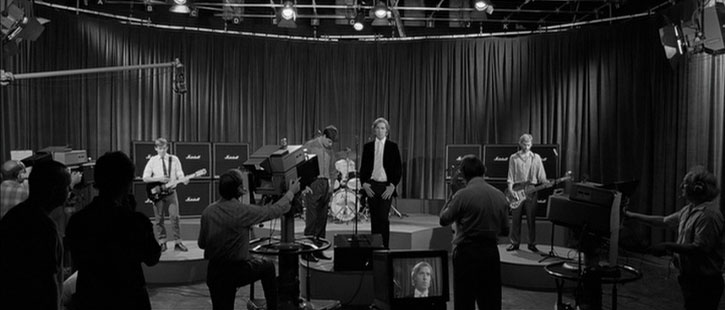
The performance scene emphasizes the significance of certain televised media moments and performances in popular music history. Before Joy Division’s Granada Reports performance, the Sex Pistols appeared on Bill Grundy’s Today show in December of 1976-a quintessential performance in the popular history of the Sex Pistols, as it brought the band into the homes and minds of many English citizens in great part because of the swearing and heated exchange between the band and Grundy. From the perspective of John Lydon (better known as Johnny Rotten), Grundy “behaved like a filthy, dirty old man, and that’s what came out in the interview. He more or less told us we were all filthy scum” (126). After Lydon and Steve Jones reacted to Grundy’s behaviour, the exchange intensified. Lydon, commenting on the immense influence of the televised event, adds that the “Grundy show was absolutely the hinge. Before, the Pistols were just a group of annoying musical hacks” (181). Furthermore, such performance scenes, whether televised or not, are central to the historical music biopic and contemporary cinema’s reimagining of such events, highlighting critical moments in the viewer’s memory. Prominent examples include Joaquin Phoenix as Johnny Cash performing at Folsom Prison in Walk the Line (James Mangold, 2005), and the performance of The Doors’s “Light my Fire” on The Ed Sullivan Show, restaged in Oliver Stone’s The Doors (1991). The Folsom prison performance is cited as both the “foundation of [Cash’s] mid-career resurgence and the framing device for the 2005 biopic” (Deusner). The Doors’s Sullivan appearance encapsulates Jim Morrison’s controversial stage performances that would intensify over the years, as the band was asked to change the lyric “higher” to “better,” but performed the original anyway.
Televised performance scenes can be thought of as iconic events, which, according to Patricia Leavy, are “signature events [that] occupy a special space within [a] culture, not necessarily because of their actual lived social significance, but based on the breadth of cultural meanings that come to be associated with them” (4). Although Leavy discusses iconic events in relation to famous disasters or tragedies-Pearl Harbor and the sinking of the Titanic, for instance-much of her analysis can be applied to the televised music performance. The ways in which iconic events are seen and heard in popular culture, according to Leavy, affects “the public’s understanding of the event across generations […] normalizing its national significance while renegotiating national identity” (26).[1] Leavy adds that films “are perhaps the primary source through which generations that did not live at the time of the event, come to learn about it” (26). Through Corbijn’s representation of Joy Division’s televised performance of “Transmission,” audiences and fans (both those who remember the original televised performance and those who know Joy Division through Control) are exposed to a significant event contributing to the band’s cultural legacy. The national (or cultural) significance of iconic events, as discussed by Leavy, may also illuminate aspects of the relationship between fandom and popular music performances. Corbijn’s recreation of the “Transmission” performance employs a shared set of iconic stylistic devices with which fans identify, such as Curtis’s signature dancing style, the aforementioned camera angles mimicking the original performance, and the bass tones characteristic of many Joy Division songs. Linked through an interest in Joy Division’s music, fans experience the represented performance as part of an imagined community; a shared interest in a particular genre or style of music connects them together across the boundaries of both time and space, encouraging cultural identification through their mutual experience of a signature event. Applying Benedict Anderson’s concept of the imagined community to shared or popular memory, Geoffrey Cubitt ponders whether “communities that are imagined are communities not just of the living, but of the living with the dead and (by projection) the yet-to-be-born” (138). Thus, through the film, and more specifically the represented televised performance of “Transmission,” links are established not only between old, new, and potential fans, but also between the past, present, and future. The ‘presence’ of the performance, then, has the potential to transcend time.
The links between the past and present inherent in the re-imagined televised performance highlight both historical accuracy and inaccuracy, raising questions about the repackaging of the televised music performance in popular culture (in this case, contemporary cinema). As Corbijn notes regarding Control‘s treatment of such performances, “I wanted to be very accurate with the Joy Division material, because that is documented. I thought it would be nice if it felt so real that you thought it was a documentary, if you started to believe that it’s the real thing” (Tewksbury). Striving to recreate the performance with the greatest attention to detail, Corbijn uses similar instruments and clothes to those from the original performances, as well as comparable camera angles, framing, and movements of each band member. However, the fact that Control‘s “Transmission” is an amalgamation of two television broadcasts obviously thwarts this effort toward historical accuracy to some degree. As drummer Stephen Morris claimed after viewing the biopic, “None of it’s true really…it’s sort of true, but you have to take liberties when you’re making a film because the truth is too boring” (“Joy Division”). Morris raises an important point that is worth expanding upon: the historical inaccuracy he speaks of is probably more representative of the tricky and selective nature of how shared memory tends to recall such historical events, even when photographs, televised and filmed documents exist and remain readily accessible for comparison.
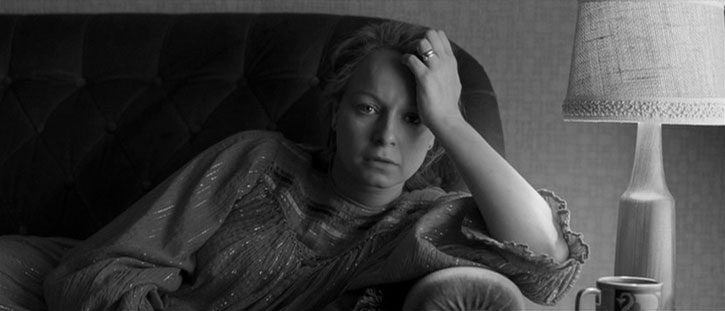
In Camera Lucida, Roland Barthes argues that history “is constituted only if we look at it-and in order to look at it, we must be excluded from it.” Living souls, Barthes argues, are the very contrary of history (65). Corbijn, despite stressing that he would like the viewer to think Control is a documentary, is in actuality working from, and with, documents to retell a past story in the present-documents that include Deborah Curtis’s book, Touching from a Distance and love letters exchanged between Annik and Ian (“Annick” [sic]). As a living filmmaker reflecting on past events, Corbijn is temporally and subjectively distanced from the story of Joy Division in the late 1970s. His own history and subjectivities are unavoidably present in his film. For this reason (and for many other reasons), it is impossible to accurately retell and represent each and every moment of Joy Division’s musicology. It is necessary to choose from the available documents, interpreting or reinterpreting them in such a way that forms a persuasive aesthetic and narrative, reflecting the popular understanding of the band (Rodman 41). Leavy adds to this discourse, arguing that films, “as well as other commercial or popular interpretations, have the potential, at their best, to ignite a public discourse about the very conundrum on which all historical narratives are based” (180, emphasis in original). That is, historical film can expose “‘the irresolvable dual status of historical narratives, as document and fiction'” (Anton Kaes qtd. in Leavy 180). While it is important to emphasize the inability of historical exactness to translate through popular culture, the significance of popular representations in film and television cannot be ignored. As an iconic event within a historical music biopic, the televised performance scene of “Transmission” can be considered among the dominant moments within the popular history of the band, marking a critical turning point in Joy Division’s career trajectory, as well as Curtis’s emotional and mental stability. The scene ultimately pushes forward the film’s narrative and foreshadows events to come. The televised performance is not, and cannot be, historically faithful to the original performances, but it can be representative of the popular memory and history of the band. It is recognizable and identifiable as a Joy Division performance, and it can symbolize the effects the original performances had on the careers and lives of the band members-primarily Curtis.
The importance of the televised performance in relation to Joy Division’s career is evident both before and after the “Transmission” scene in Control, as it marks the beginning of the band’s transition from amateurs on the brink of success to a touring band with a manager, a record contract, and a trip to the United States on the horizon-a sentiment raised earlier by Lydon’s thoughts on the Grundy appearance. Tony Wilson, as a journalist and media personality with experience in establishing upcoming artists, is an authoritative figure for presenting the band to new audiences. As Leavy argues, newsmakers (or in this case, a TV host) frame and give meaning to events, simply by reporting on and presenting them to audiences as something worth covering on television. Wilson legitimizes these determinedly new and exciting sounds for an audience of TV viewers. In the film, Curtis is aware of Wilson’s ability to further the careers of bands, as he confronts Wilson in a bar, demanding that Joy Division perform on Wilson’s show. The importance of this performance is further emphasized through the anticipation reflected in the faces of Ian’s family and his wife, as they focus their attention on the TV sets that frame the band during the song’s driving bass intro. Including these reaction shots and the television set, Corbijn delivers the performance as part of a collective or popular memory/history, an important document that is critical to telling this particular story. Just as Wilson did in 1978, Corbijn presents his audience with a new performance worthy of their attention. The scene concludes with a close-up shot of a Factory Records contract signed dramatically in Tony Wilson’s blood, symbolizing in one image the visceral yet mythologized qualities that will surround the band’s cultural identity.
The “Transmission” performance scene is able to forward the narrative as an iconic event that collapses time and space, exerting new commercial pressures on Curtis and the band, both in Joy Division’s popular history and in Corbijn’s contemporary representation. No longer is the band restricted to relatively local audiences, present only during live performances. Around the time of Joy Division’s televised performances in the late 1970s and into the 1980s, television was undergoing “massive technological and institutional changes […] becoming part of the transnational media industry and a global mediascape” (Hanke 60). Television was reaching new fans in new places, and the band was required to tour in order to reach these new fans and develop their career. Moreover, in a few short years following Joy Division’s original televised performances, MTV was launched in August 1981, marking a distinct development in the role of television in the pop music industry. As Andrew Goodwin writes, the 1980s saw an “increasingly pervasive” promotion of popular music through a “televisual context” (xvi). According to Goodwin, music television represents “both the blurring of two hitherto separate (indeed, sometimes hostile) media and a new hybrid of programming and promotion that mixes media and genres at the level of the text” (25). “Transmission” appropriately emphasizes the transformative role of television within the music industry; however, it does so in a way that hints at Curtis’s inability to later cope with the band’s success. The lyrics “Staying in the same place, just staying out the time/ Touching from a distance/ Further all the time” reflect the capacity for music television and music videos to distribute and promote music nationally and internationally, reaching or ‘touching’ viewers from a distance. Yet the chorus, “Dance, dance, dance, dance, dance, to the radio” presents a strong contrast to the act of sitting and watching television, which is visually reinforced by Curtis dancing and running on the spot. The scene positions television as a powerful medium for transmitting an artist into the homes of countless viewers, while simultaneously foreshadowing Curtis’s apprehension and personal difficulties with increasing popularity and fame.
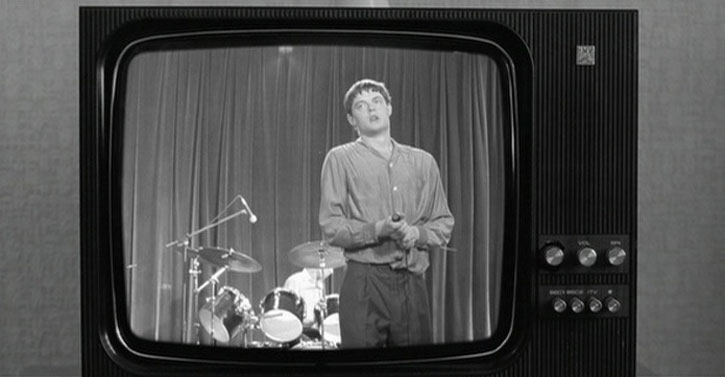
Both the consequent increase in pressure and Joy Division’s commercial success compound the tensions that trouble Curtis, such as the polarity between a localized family life and the travel commitments of a band on the rise. As Riley loses control during the build up of “Transmission,” channeling Curtis’s signature hypnotic dance and tossing aside the microphone stand to make room for flailing arms, the scene foreshadows the darkness and dramatic events that follow this performance and mark the final years of Curtis’s life. The scene cuts between close-up shots of Riley’s face, hands held tightly on the microphone with his bright wedding ring as a focal point, and shots that frame his whole body, while he moves and dances like Curtis with hands in motion. The conflict and confusion of Curtis’s life that becomes the focus of much of the remainder of the film is firmly established in this scene, reflected in Morton’s facial expression at the end of the song as she stares at the television, anxious and troubled. Later in the film, Curtis earnestly reflects on the transition from the band while recording and touring for Unknown Pleasures (including the “Transmission” performance), and the time following the release of Closer (1980)-a time during which Curtis suffered multiple epileptic seizures and attempted suicide. As he is driven away from the hospital, he says: “I don’t want to be in the band anymore. Unknown Pleasures was it. I was happy. I never meant for it to grow like this… I have no control anymore.” The band’s success has grown beyond Curtis’s control due in part to the wide reception of this nationally televised performance of “Transmission.”
Corbijn’s representation of the two original television performances not only demonstrates how the televised performance was central to taking Joy Division from a fairly local, borderline-popular band to the point of national (and international) recognition, but it also repackages the iconic televised performance for a contemporary film audience. As Leavy argues, “it is in the commercial realm of films, books, and products that we can see most clearly how collective memory is revised over time to reflect contemporary needs and understandings” (27). The representation of the two original performances can reflect the expectations of contemporary music fans who have grown up with stylized music videos on MTV, and who currently live in a visually-dominant culture. Despite their originality or ‘authenticity’, the original televised performances of the band appear stylistically dated with production values that are of noticeably lower quality when compared to contemporary standards for audio-visual representations of music. Moreover, technological and stylistic standards are not the only aspects of popular culture subject to change. Historical meaning and perceptions of history also “evolve over time, reflecting among other things, the extent to which our relation to the past is conditioned by present circumstances” (Anderson 20). Corbijn, with relevant experience as a music video director and mediator of Joy Division’s iconography, is able to repackage these original performances into an updated performance of “Transmission” that is reflective of the aesthetic quality and technical capacity of contemporary popular cinema and music.
Analyses that focus on the representation and role of historical moments within contemporary popular culture are frequently associated with modern capitalism and the commodification of history. Cubitt, for instance, argues that “the logic of market capitalism,” which can be applied, in this case, to the circulation of a popular film, “turns references to the past into items whose circulation and exchange is no longer restricted by any need to relate them to the actual contexts of experience” (246). A number of these arguments are skeptical of the relationship between television and history. Fredric Jameson associates visual media with forgetfulness in postmodern culture, arguing that “TV and other visual media have fostered an increasingly ‘derealized sense of presence, identity, and history'” (qtd. in Anderson 19). Others, such as Alison Landsberg, conceive of a ‘prosthetic memory’ that contemporary popular culture generates through repackaging memories and images from the past. Landsberg argues that “commodification enables memories and images of the past to circulate on a grand scale […enabling] the transmission of memories to people who have no ‘natural’ or biological claims to them” (qtd. in Cubitt 247-8). The televised performance scene collapses temporal and spatial boundaries by exposing new fans to an original performance from another time and place, and through the use of contemporary technologies that allow the performance to mimic the aural and visual quality standards and stylistic codes of the present. The original televised performances brought Joy Division into the homes of music fans with the sense of import and legitimacy associated with Tony Wilson, BBC2, and the medium of television itself at the time. Corbijn’s contemporary representation of Joy Division places the band in the realm of contemporary popular culture through the medium of film. The audience sees and hears actors, but the legacy of the band is recalled through the televised performance scene.
Film and television have the capacity “to make a unique contribution to historical discourse because they allow viewers to recover the ‘liveliness’ and richness of the past-to see and feel what it must have been like to be a part of history” (Anderson 24). The “Transmission” scene in Control recalls the ‘liveliness’ and ‘richness’ of the past, placing memorable moments within the context of contemporary cinema. The restaged scene depicts the excitement and the apprehension generated by the televised performance, highlighting, also, the ways in which small details in performance become etched in popular memory, and this is a large part of what the film is about. It is therefore relevant not only to consider the popular history/memory of a band as generated by themselves, but also the role of mediators (such as filmmakers and photographers), as well as the audiences and fans who receive and reflect upon the various representations that are manifest in popular culture-the living groups and individuals who both shape and are shaped by cultural and technological developments. Despite unavoidable deviations from the original performances, Corbijn’s “Transmission” scene extends the popular memory and history of the band, proving that performance scenes in music biopics are not only important sites of study, but significant ‘transmissions’ of popular history in and of themselves.
Notes
[1] For the purpose of this article, Leavy’s use of national significance and identity could be replaced with cultural significance and identity.
Works Cited
Anderson, Steve. “History and Popular Memory.” Television Histories: Shaping Collective Memory in the Media Age. Eds. Gary R. Edgerton and Peter C. Rollins. Lexington, KY: The University Press of Kentucky, 2001. 19-36.
“Annick Honoré / Joy Division-‘Truth hits everybody.'” Side-Line Music Magazine. 29 May 2007. 15 Jun. 2009. <http://www.side-line.com/interviews_comments.php?id=23440_0_16_0_C>.
Barthes, Roland. Camera Lucida: Reflections on Photography. New York, NY: Hill and Wang, 1980.
Cubitt, Geoffrey. History and Memory. New York, NY: Manchester University Press, 2007.
Deusner, Stephen M. “Johnny Cash: Johnny Cash at Folsom Prison: Legacy Edition.” Pitchfork 23 October 2008. 19 Jun. 2009. <http://pitchfork.com/reviews/albums/12331-johnny-cash-at-folsom-prison-legacy-edition/>.
Edgerton, Gary R. “Introduction: Television as Historian: A Different Kind of History Altogether.” Television Histories: Shaping Collective Memory in the Media Age. Eds. Gary R. Edgerton and Peter C. Rollins. Lexington, KY: The University Press of Kentucky, 2001. 1-18.
Goodwin, Andrew. Dancing in the Distraction Factory: Music Television and Popular Culture. Minneapolis, MN: University of Minnesota Press, 1992.
Hanke, Robert. “Quantum Leap: The Postmodern Challenge of Television as History.” Television Histories: Shaping Collective Memory in the Media Age. Eds. Gary R. Edgerton and Peter C. Rollins. Lexington, KY: The University Press of Kentucky, 2001. 59-78.
“Joy Division Biopic ‘Not True’ Say Band.” NME News 29 Jun. 2007. 11 Feb. 2009. <http://www.nme.com/news/joy-division/29343>.
Leavy, Patricia. Iconic Events: Media, Politics, and Power in Retelling History. Lanham, MD: Lexington Books, 2007.
Lydon, John, with Keith and Kent Zimmerman. Rotten: No Irish, No Blacks, No Dogs. New York, NY: Picador, 1994.
Rodman, Gilbert B. “Histories.” Key Terms in Popular Music and Culture. Eds. Bruce Horner and Thomas Swiss. Malden, MA: Blackwell Publishing Ltd., 1999. 35-45.
Tewksbury, Drew. “Losing ‘Control’: Joy Division’s Story Comes to the Big Screen Courtesy of Music Video Vet Anton Corbijn.” DrewTewksbury.com. 8 Oct. 2007. 10 Feb. 2009. <http://drewtewksbury.com/2008/04/19/interview-anton-corbijn-on-control/>.

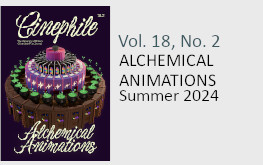
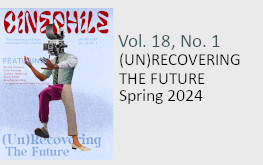
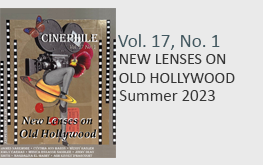
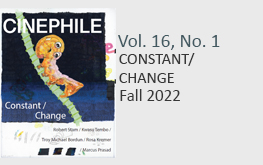
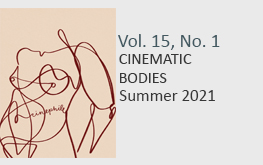
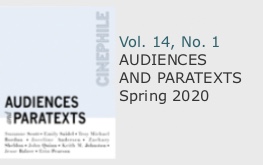
[…] Fateaux (whom I quote in this article) wrote about constructing a narrative out of historical events for the […]